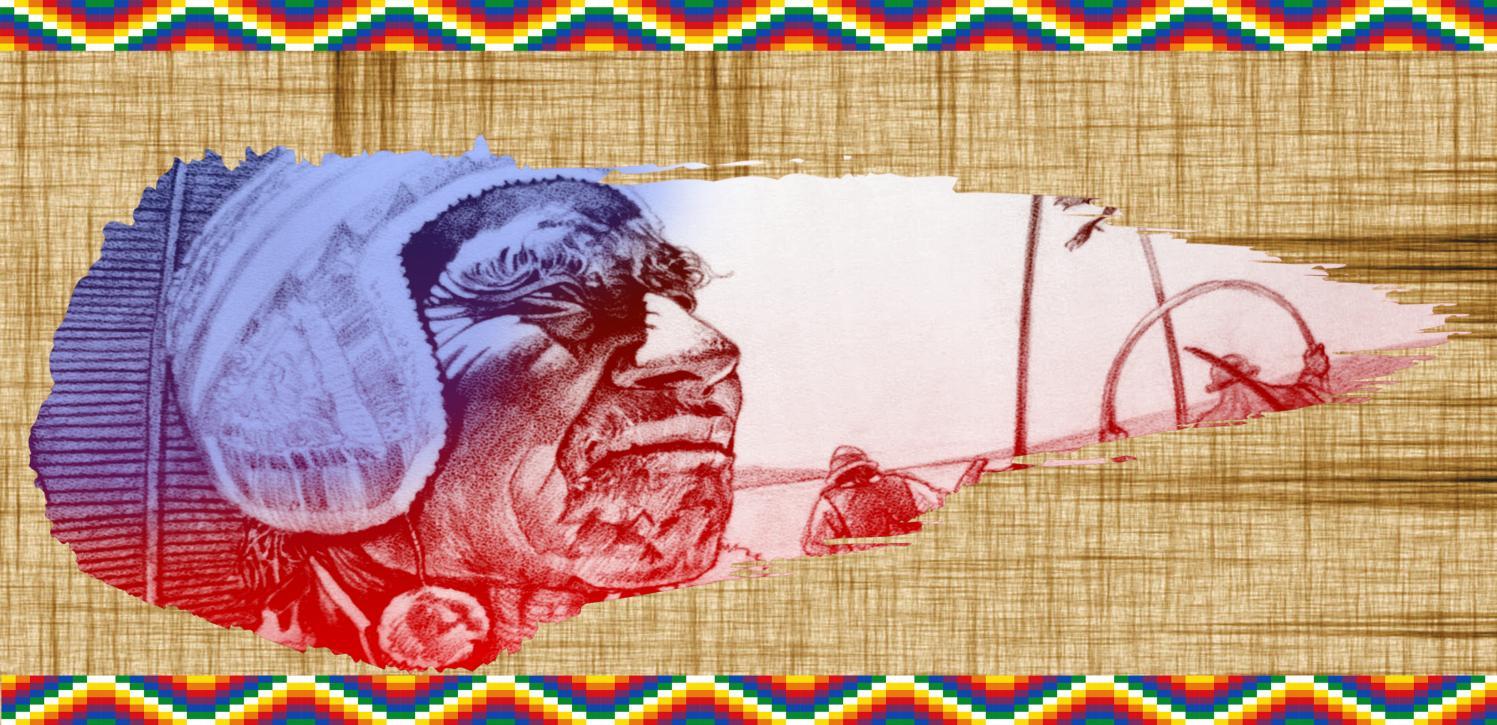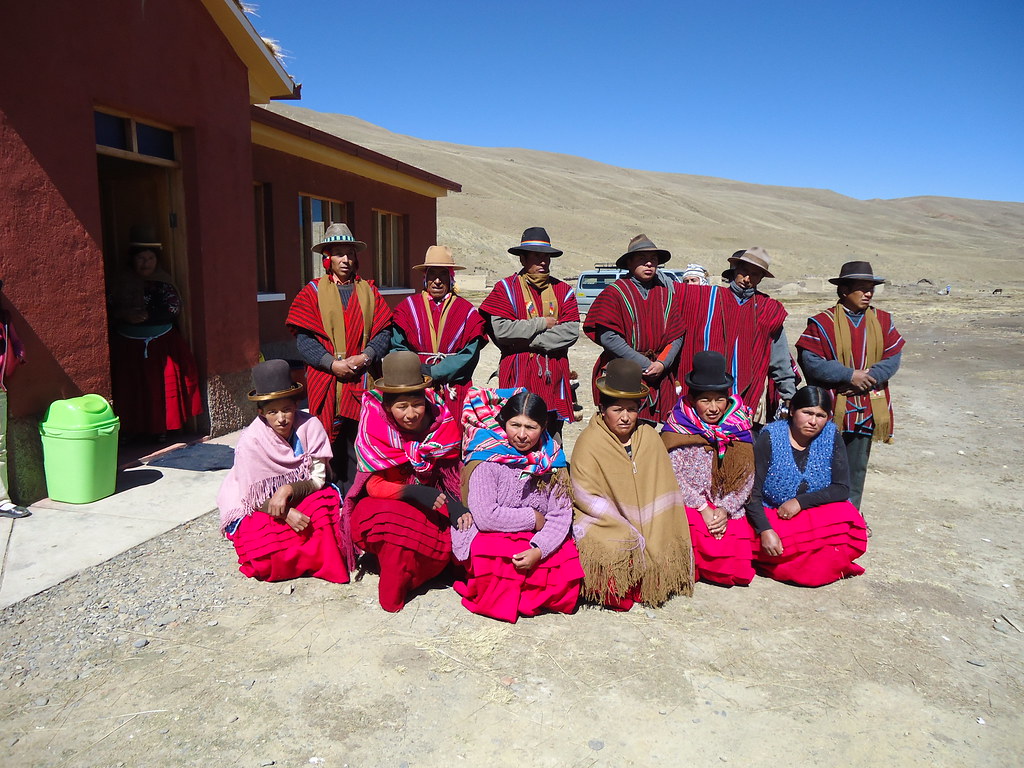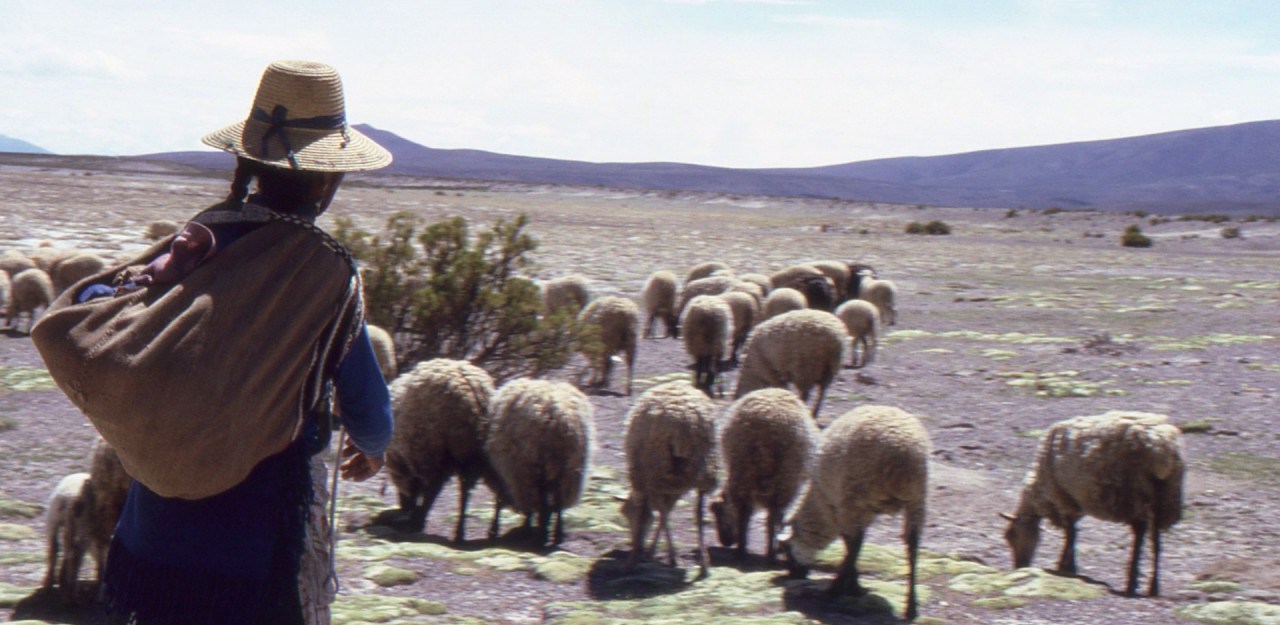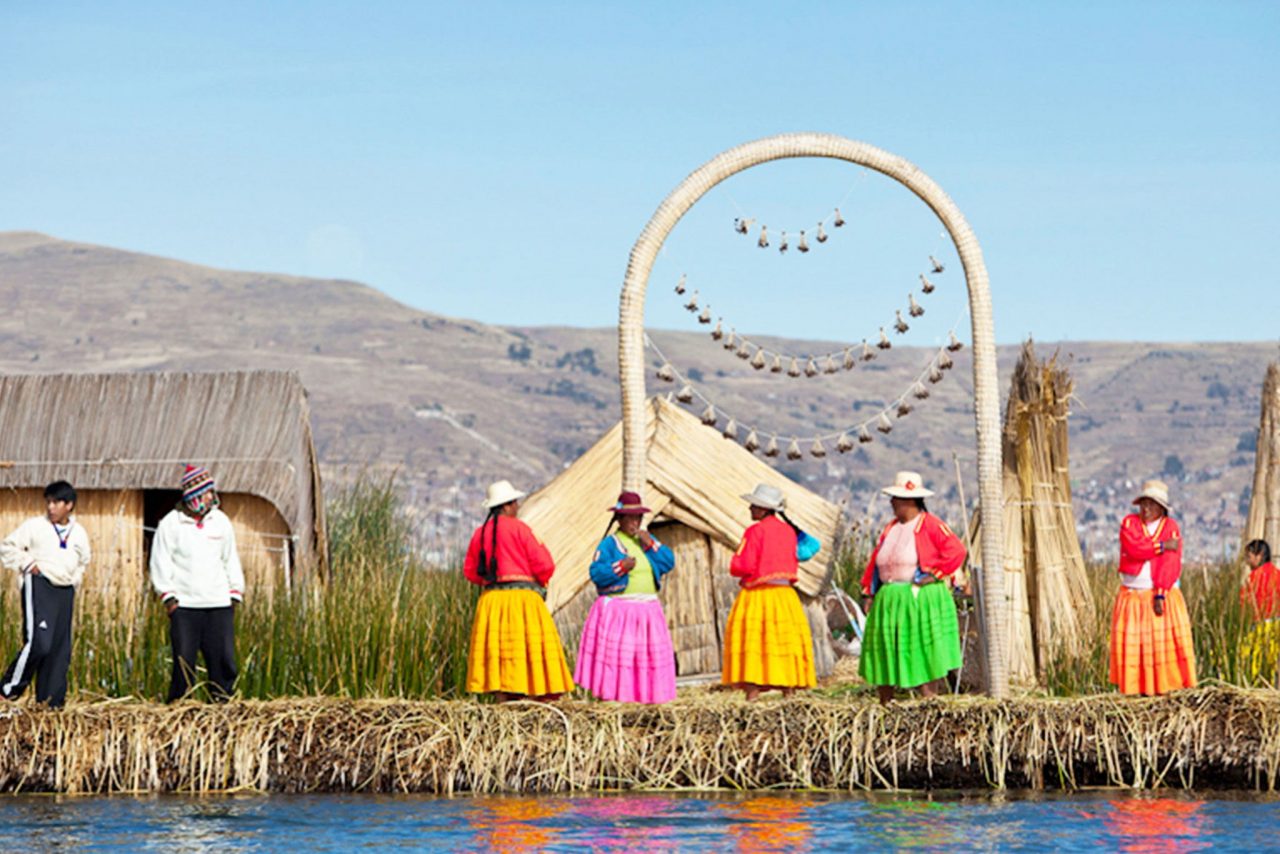Currently, this native Andean town of South America has around 3 million inhabitants in different areas of this continent, its history dates back about 10.000 years as descendants of the Incas. Through this article, we invite you to learn a little more about this town and the Aymara culture.

Aymara culture
Also as Aimara or Aymará, it is a native or indigenous tribe of South America that has specifically occupied the area of the Andean plateau of Lake Titicaca for about 10.000 years (pre-Columbian period), expanding between western Bolivia, the northern part of the territory Argentina, southeastern Peru and northern Chile; They are also referred to as the Collas, but should not be mixed with the ethnic group of the same name that resides in northern Chile and northern Argentina, nor with the term Colla used to describe the inhabitants of western Bolivia.
Starting from the veneration towards Pachamama, and with a strong conception of correspondence towards her; This is how this culture has become the socioeconomic support of the Inca Empire. In fact, these natives used the ayni system, a mode of reciprocal assistance between the Aymara chiefs, made up of large families; in which merit consists in giving and not in accumulating, which evidently creates influence within society.
The economy of this culture was defined by its dedication to grazing, textile development and agriculture, with which they developed the practice of chuño or dehydrated potatoes, a food that can be kept for more than 15 years; Likewise, they have managed to survive to this day, thanks to the constancy of their Aymara language.
Denomination
The concept of the word «Aymara» definitely emerged during the colony, and with rare exceptions it was not used to socio-politically identify a population group in this Andean region. The socio-political alignments, authentic nations in the fifteenth and sixteenth centuries (Aymara kingdoms), were grouped under the identifier "Aymara", for economic purposes, but keeping the original names to describe, for example, more relevant political organizations according to fluctuating economic interests. , ecclesiastical or administrative of the colony.
Even when an "Aymara" encomienda is contemplated for the colonial jurisdiction of La Paz, the designs of indigenous jurisdiction such as: Carangas, Soras, Casallas, Aullagas, Uruquillas, Azanaques and Las Quillas, are used for the jurisdiction of La Plata and even In the eighteenth century there is no political section identified as "Aymara" by the colony. Meanwhile at that time, the bishopric of La Paz maintains an administrative organization, which uses the original names of Sicasica, Pacajes, Omasuyos, Larecaja, Paucarcolla and Chucuito.
There were several communities that communicate with this ancestral language, and that were also part of the Inca empire. Likewise, they received their own identity with the pseudonym qullasuyu (also identified as collasuyo). These towns were: Aullaga, Larilari, Charcas, Umasuyus, Quillaca, Pacasa, among others. The Bolivian anthropologist Xavier Albó, expressed:
«The personalization of the Aymara as a common clan, with its own linguistic region, was to a large extent the derivation of the new colonial context, which «subjected» the ayllus and the societies around the country, for fiscal purposes, gradually reducing their relations with its advances in other ecologies and promoting certain «general or lingua francas», to facilitate evangelization.
Thus consolidating two vast linguistic regions, one Quechua and the other Aymara; this process of adapting identity around a common language and territory was especially consumed in the XNUMXth century.”
History of the Aymara Culture
The history of the rise or beginning of the Aymara culture is somewhat confused, and different papers and assumptions have been made about it, but after a deeper investigation and recognition by anthropologists, academics, historians and archaeologists such as Carlos Ponce Sanginés and Max Uhle, it was successfully verified that this native group would be a successor of the Tiahuanaco culture, some of its main arguments are the following:
1. In Tiahuanaco, they talked in the Aymara language, this was the dominant jargon; therefore, the assumption that the Puquina language was spoken in Tiahuanaco will be based on the fact that the chronicler Reginaldo de Lizárraga represented the Puquina population. However, he made a mistake in his written composition, representing the people of Puquina as prosperous, agronomists and ranchers, substantiating this hypothesis, since agriculture and cattle breeding developed in Tiahuanaco.
However, other columnists such as Guamán de Poma Ayala would point out that the tribe of the puquina language was very humble to the point that they even lacked clothes, this is the demonstration that Tiahuanaco did not dominate the puquina language, since in its heyday this civilization it would display to an opulence, as figured in its ceramics, effigies and textiles.
Also emphasized in the research and exploration carried out by Max Uhle and other authors on the extension of the Aymara in the Tiahuanaco culture; Likewise, the great set of Aymara words in the Bolivian forests dominated by the Tiahuanaco would be revealed.
2.The archaeological remains discovered by Carlos Ponce Sangines show that Tiahuanaco would have experienced a civil conflict, a battle that would lead to the dispersion of this kingdom in the small regional towns of the Aymaras, as evidenced by the establishment of Tiahuanaco in Caquiaviri (Capital of Señorío Aymara Packages).
During the rise of Tiahuanaco, it maintained a small population, but at the end of Tiahuanaco it would have increased in notability and population, as shown by its ceramics, which at the time of the Aymara Empire, would have connotations of Aymara pottery - Tiahuanaco, but this evolution would change from artistic pottery to Aymara lordship, which shows that the Tiahuanaco people would have emigrated and constituted regional kingdoms with an intonation based on the Aymara culture of Tiahuanaco.
3. The settlement patterns studied by Jordán Albarracín, from the period after Tiahuanaco, indicate a migration of the Tiahuanacotas to their neighboring settlements, this was later reaffirmed by Alan Kolata in an archaeological study carried out in 2003, revealing pieces of pottery corresponding to the Aymara lords, with a clear Tiahuanacota style and without external influences, this pottery will later go through a transition period between Aymara ceramics and manors.
Tiwanaku Foundation
Tiahuanaco was established around 1580 a. C., as a small village and evolved to city proportions between 45 and 300, gaining significant power in the southern Andes region. At its maximum magnification, the city was about 6 km², and had a maximum population of about 20.000.
Its ceramic style was unique, from the one found until 2006 in South America. The huge stones found at the site are an important feature; of about ten tons, which they cut into a sculpted square or rectangular shape. However, it collapsed around 1200, where the city was abandoned and its artistic style vanished with it.
Appearance of the Aymaras
With the disappearance of the Tiahuanaco Empire, the region was divided into Aymara ethnic groups. These were identified by their cemeteries created by tombs in the form of chullpa towers; there are also enclosures called pucará.
The paradigm by which these ethnic groups have been regulated is that of verticality or dominance over the different ecological floors that maintain their economy of permanence. It has not been visualized in the different civilizations or cultures, the need and the attachment so marked in terms of relations with the coast and the valleys as are the Aymara peoples of the highlands, which is why each center of the puna is controlled by the colonization of peripheral areas located at different heights and with various climates.
The main divinity of this Aymara-speaking tribe was Tunupa, the intimidating god of the volcanoes. In their esteem and respect, they made oblations with humans and great festivities. In the archaeological studies of this civilization in Akapana, materials such as gifts, ceramics, pieces of copper, skeletons of camelid animals and human burials have been found; These objects were found in the first and second levels of the Akapana pyramid, and the pottery belongs to Phase III of the Tiahuanacota.
At the base of Akapana's main level, men and boys were dismembered with skulls missing; these human skeletons were found together with dismembered camelid skeletons, as well as pottery. On the second level, a totally dislocated human trunk was located; Likewise, a total of 10 human burials were found, 9 of which were men. These oblations supposedly belong to gifts dedicated to the building of the pyramid.
Siege of the Incas
In the mid-9th century, the Colla kingdom retained a large area of land with its capital Hatun-Colla. The Inca Viracocha ventured into the area, but the one who dominated it was his son Pachacútec, the XNUMXth Inca ruler. Just as the Collas were to the north, to the south was the Charca group, which had two groups: The Carangas and Quillacas around Lake Poopó, and the Charcas who occupied the north of Potosí and part of Cochabamba. Charcas and Collas spoke Aymara.
The tangible culture of the Carangas exhibits large cemeteries or chullpares, some of which still have traces of color on their external walls. Once the Incas took the Carangas, Huayna Cápac took them to work in the Cochabamba valley as mitimaes. The mansion called Charca, to which Cara-cara was attached, was besieged by the Incas in the period of Tupac Inca Yupanqui and led to the conquest of Quito. For their part, the inhabitants of Cara-cara were as warriors as the Charca, who still fight in their territory called “Tinkus”.
The Inca Lloque Yupanqui began the occupation of the Aymara territory at the end of the XNUMXth century, which was extended by his successors until the middle of the XNUMXth century, and finally consummated by Pachacútec when he defeated Chuchi Cápac. In any case, it is believed that the Incas had a great influence on the Aymaras for some time, since their architecture for which the Incas are well known, was clearly changed in the Tiahuanaco style, and finally the Aymaras retained some independence under the Inca empire.
Recovery of the Aymara
Later, the Aymaras from southern Titicaca rose up and after refuting Tupac Yupanqui's first onslaught, he returned with more troops and finally subdued them.
Its inhabitants are estimated between 1 to 2 million at the time of the Inca Empire, they were the main city of Collasuyo conquering western Bolivia, southern Peru, northern Chile and Argentina. After Spanish colonization in less than a century, approximately 200.000 survivors or less were compressed; after independence, its population began to recover.
Currently, the majority of the Aymaras exist in the territory of Lake Titicaca and are grouped to the south of the lake. The urban headquarters of the Aymara territory is El Alto, a city of 750.000 citizens, and also in La Paz the center of Bolivia's administration; Also, many Aymaras live and work as farmers in the surroundings of the Altiplano.
It is also estimated that there are 1.600.000 Aymara-speaking Bolivians. Between 300.000 and 500.000 Peruvians use the language in the jurisdictions of Puno, Tacna, Moquegua and Arequipa. In Chile, there are around 48.000 Aymara in the Arica, Iquique and Antofagasta regions, while a smaller group is found in the Argentine provinces of Salta and Jujuy.
The Aymaras used a kind of protokhipus, a basic mnemonic accounting system common to different pre-Columbian tribes, such as those of Caral-Supe and Wari (before the Aymara), and the Incas. It is not certain that they enjoyed a written language, despite the fact that some, such as William Burns Glynn, question that the Inca khipus could have been a form of it.
Demography
The Aymara are found in several of the southern nations of America. Below are the demographic studies that have been carried out on this civilization in the different countries that are part of its environment and place of settlement, among them we have:
Aymara in Argentina
The Complementary Survey of Indigenous Peoples (ECPI) 2004-2005, in addition to the 2001 National Population, Household and Housing Census, had an impact on the identification and/or verification of the first offspring of 4.104 Aymara natives. For the year 2010, the national population census revealed the presence of 20.822 individuals who identified themselves as Aymara throughout the country, including:
- 9.606 in the city of Buenos Aires,
- 6.152 in the provinces of Buenos Aires,
- 773 in Jujuy,
- 358 in Neuquen,
- 326 in Tucuman.
There is only one society with a legal status recognized by the National State, the Rodeo San Marcos Luján La Huerta native tribe, which is common to the Aymara, Kolla and Omaguaca peoples, and is located in the town of Santa Victoria Oeste in the province of Jump.
Aymara in Bolivia
The population that identified itself as Aymara in the 2001 Bolivian census was 1.277.881; that number dropped to 1.191.352 in the 2012 census.
Aymara in Peru
The 2017 national census found that 2.4% of the population aged 12 and over (548.292) self-identified as native Aymara. These usually congregate in a single ethnolinguistic community; however, different communities can be identified, among which the lupacas, urus and pacajes stand out.
Within the Aymara ethnic communities in Peru, there are also two native communities that are geographically isolated from the Aymara natives who traditionally inhabit the surroundings of the Collao plateau. These ethnic groups are the Jaqarus and the Kakis, who inhabit the mountains of the Tupe district, Yauyos province, in the Lima region; the language of these ethnic groups were studied for the first time in 1959 by Martha Hardman, cataloging them in the Aru or Aymara family.
Social organization
The social organization of this culture is derived from the conception of jaqi, which makes up everyone (men and women), through marriage or jaqichasiña they create an initial axis through which a series of commitments are formed with the society involved in this meaning. , an equal interrelation with ecosystem, deities and family.
However, to achieve this both men and women must go through a period of preparation and learning that begins at home, that is, from childhood. So initially by watching their parents, they learn to take care of small animals; and in adolescence, the young man begins to train in agricultural and textile activities, while the young woman learns to spin the spinning wheel, weave, cook and herd.
When they both become adults, they already have the knowledge of life in the countryside; for example: the man dominates very well the agricultural and commercial techniques, while the woman has managed to perfect the spinning to produce any type of cloth. In this way, the Aymara society considers that it is already prepared for marriage and, therefore, can form a nucleus that benefits this civilization.
In the Aymara culture there are different ethnic groups, which are distinguished both linguistically and socially, but in general the model of social organization is determined by the marka, that is, the territory where each ethnic group operates.
In this sense, in the Aymara social organization there was an evident partition between the agricultural and pastoral sectors, and in a similar way, it was marked by the inequality of a social nature empowered by merchants, priests and warriors, in relation to the working class.
However, that has now changed, as it is estimated that 80% of Aymara live in major cities doing informal work.
A significant point of the social structure of the Aymara who are in the fields is that only people united in marriage can adhere to positions of power and influence, but this male-female order has another vision, since it is closely linked to the brute force of man's work; as for her, the woman is related to the subtle force of knowledge and is always seen as the partner who legitimizes this parity.
After all, the social alignment of the Aymaras is a fundamental piece of the puzzle in the balanced coexistence between man and the environment.
Organization Politics
At the territorial level, the Aymara political organization is part of the function of three governments that ruled other small domains; however, there was never a geopolitical union between them, due to an eternal rivalry. In this way, this power list was made up of the following jurisdictions:
- Collas: Under the rule of King Cari of the capital Hatun Colla, this was the first Aymara kingdom in the western area of Lake Titicaca.
- magnifying glass: Located on the southwestern coast of Lake Titicaca and commanded by the famous King Course, it is divided into the capital Chucuito and six other regions such as Ácora, Ilave, Yunguyo, Pomata, Zepita and Juli, each region in turn was divided into two territories composed of several ayllus. Although they are the least organized, they contribute to the maintenance of the state of war between the kingdoms of the Aymara culture.
- Packages: Located southeast of Lake Titicaca, between the lordships of Collas and Lupacas, its capital was Caquiaviri, dividing these two communities.
Political organization structure
In the hierarchical scale of Aymara political distribution after the kings, there was a small community of distinguished people who were at their assistance, such as the Mitani who were obliged to work certain days of the year, the Yana who provided their service for life, and the aurochs who were socially inferior to the previous ones. As each ayllu or family unit was organized according to ancestral models, as we see below:
- Jach'a mallku: exercised the position of main leader of the ayllu, with military, civil and mystical designs.
- Mallku: fulfilled trade union, administrative and even political functions.
- jilakata: his performance was closely linked to the social life of the ayllus.
- kuraka: had the power to lead wars or civil defense.
- yatiri: Much admired in the Aymara community, he was the town's intellectual.
- Amawt'a: with his wisdom, he exercised his pedagogy.
- Suri: Considered a judge, he dealt with property and land cases related to inheritance.
Therefore, the Aymara political organization did not undergo enormous transformations when it perished under the Inca domination, which allowed its growth in the Ecuadorian and Chilean regions.
Customs of the Aymara Culture
If there is something transcendent in the Aymara culture, it is its values that surround life in peace and harmony with all its surroundings. In addition, these have a number of traditions that have been maintained to this day, including:
wifala
Its dialect is the Aymara language; however, many of them apply Spanish speech as a result of Spanish colonization. Extending a little more from the historical debate, today many Aymara communities and various social currents use the wiphala in protests and political demands, as well as in religious rites and cultural celebrations. The discussion as to whether or not the current use of wiphala fits the story therefore remains open.
Coca leaf use
Some people practice acullico, a practice consistent with the consumption of the sacred coca leaf (Erythroxylum coca). Due to its status as a sacred leaf during the time of the Inca Empire, its use was limited to the Incas, the nobility and the priests under penalty of death; In addition to chewing, they use coca leaves in remedies, as well as in rituals.
In recent times, these types of crops have brought conflicts with the authorities, to prevent the creation of the drug cocaine. However, coca has a great contribution to the religion of the Aymaras, as it did previously with the Incas, and has now become a cultural hallmark of their identity. The cults of Amaru, Mallku and Pachamama are the oldest forms of celebration that the Aymara still practice.
Music
As an important companion for their rituals, ceremonies and celebrations, its characteristic sound is given by instruments such as the charango, quena, zampona, bombo, quenacho and rondador.
flag
Although its origin is not clear, the Aymara flag is made up of paintings in seven different colors, a symbol that identifies this ethnic group. Each of the seven colors that constitute it represents a conception:
- RED: it is the world, the word of the Andean man;
- Orange: it is community and culture, conservation and production of the human species;
- Yellow: it is verve and power, statement of integral principles; the goal is time, the statement of the progress of science and applied sciences, as well as of art and intellectual work;
- Verde: is the Andean productive and economic process, the natural abundance of the land, the environment and its living beings;
- BLUE: it is a celestial, eternal place, the statement of sidereal systems and natural phenomena;
- Violeta: is the Andean philosophical policy and discipline, the statement of the harmonious communal domain of the Andes.
- Blanco: is the process of time and transformation that brings intellectual and professional growth. Also symbol of Markas (counties) and Suyus (regions).
Textiles
With an ancestral technique and a great skill in making their garments, they are woven with characters from their vision of the world.
Aymara Culture Calendar
Aymara New Year
There is still no historical basis to determine that the Aymara year is celebrated on June 21 or to establish an exact calculation of the year that is completed (for example, in 2017 it would reach the Aymara calendar year 5525; said date (June 21) coincides with the winter solstice, which was celebrated ancestrally by the Quechua people in the Inti Raymi festival.It is important to note that as of 2013, June 21 is an "immutable national holiday" in Bolivia.
receive the sun
In Tiahuanaco, before June 21, community members and tourists who know and share this ancient festival on June 20, make a vigil similar to the traditional New Year also to say goodbye to the previous year.
From 6:00 am and 7:00 am, they prepare with traditional music and traditional rituals to welcome the New Year in front of the Puerta del Sol, with the entry of the first rays of the sun, as well as the arrival of the winter solstice.
Aymara Culture Beliefs
The majority of the population of the Aymara culture is currently Catholic. But there is a syncretism of their ancient indigenous beliefs with the practices established by Christianity. Which are expressed in different religious celebrations such as Easter or the Day of the Dead.
In the worldview of the Aymara culture, the main objective is to achieve a balance between humans and nature; starting from the concept that nature is a sacred medium and is complemented by the reciprocity of man.
In the same way, for the Aymaras, everything is double, that is, man-woman, day or night; these opposite poles do not fight, but complement each other to form a whole. In turn, they configure the existence of three spiritual spaces:
- Arajpacha: it is the sky or universe, it externalizes the principle of water, the existence and shelter of the cosmos.
- Akapacha: symbolizes the transcendental point of the Aymaras. The most significant distinctions are for the preservation of the natural balance, where they also live:
- Mallkus: They are the protective spirits commonly found on snowy peaks.
- Pachamama or mother earth: is the main deity of the Aymaras.
- Amaru: Being the serpent, it personifies the spirits associated with rivers and irrigated canals.
- manqhapacha: corresponds to the earth below where evil spirits or chaos live.
According to the ancient Aymara worldview, the primordial divinities such as Tata-Inti (sun) and Pachamama (mother earth), are energies that represent their survival.
If you found this article of the Aymara Culture interesting, we invite you to enjoy these others:









